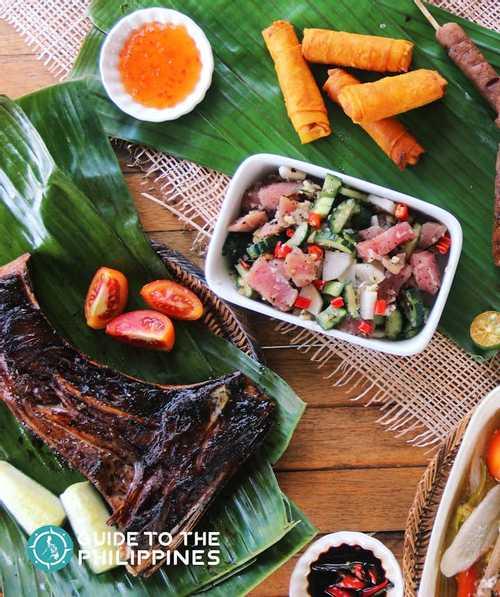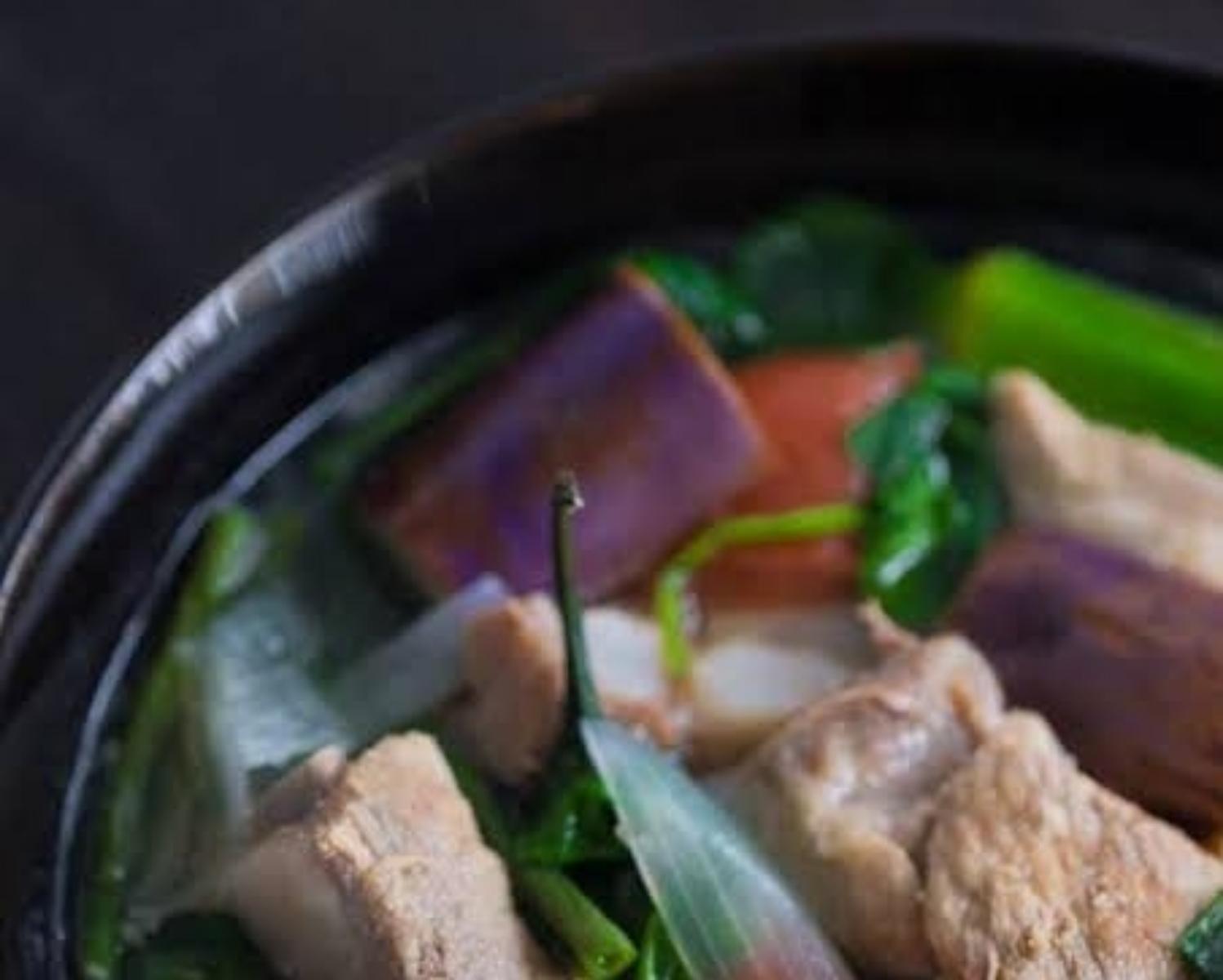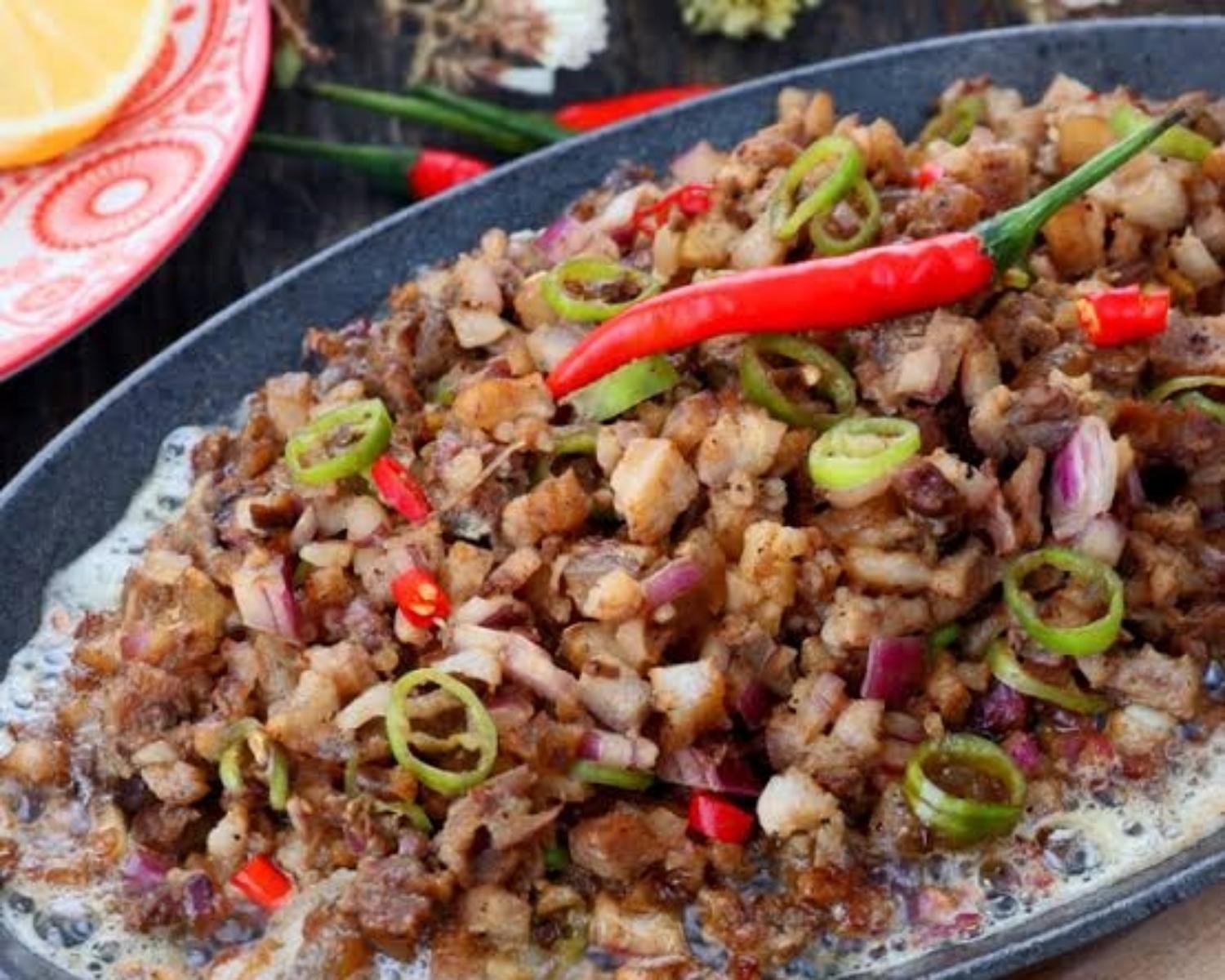Explore the World's Best Ideas
Join today and uncover 100+ curated journeys from 50+ topics. Unlock access to our mobile app with extensive features.
Origins of Filipino Food
Most Filipino dishes began with their creators making use of whatever ingredients they could find to create a dish
With the Philippines being an archipelagos, Filipino cuisine is highly local and regional
- there are hundreds (if not thousands) of individually different dishes
- some Filipino dishes served throughout the country often have different preparations; even names
8
121 reads
Influences of Filipino Food
Filipino food is known as “one of the world’s earliest fusion cuisines,”
heavily influenced by Chinese cuisine, brought along by the traders and later by the Cantonese and immigrants from the Fujian region of China.
influenced by the cuisine of its colonizers: the Spanish, who ruled the Philippines for 300 years, the Americans, the Japanese and the British who brought along Indian workers with them .
Minor influences:
- Mexican influences (galleon trade)
- native food from the Islamic regions, which were influenced by the neighboring Southeast Asian countries
9
48 reads
Filipinos Cuisine in a Nutshell
- Most Filipino dishes are named after cooking methods, not after specific ingredients/dishes
"Adobo" refers to the technique of stewing in vinegar with peppercorns and bay leaf. The word "Adobo" could mean a host of different dishes: chicken adobo, pork adobo, squid, watercres etc
- rarely spicy (most of the spicy dishes originated in 2 regions only: Bicol and the Muslim areas of Mindanao)
- Most dishes are a combination of salty, sour, sweet, bitter
- sourness is the most prevalent in Filipino food
- sour flavors are drawn from fruits, leaves and fermentation
8
54 reads
Why Filipino Cuisine Is Hard To Catalog
By virtue of it (Filipino food) being local, regional, seasonal and being influenced bh a number of foreign cuisines, cataloging Filipino dishes can be challenging.
Thid also means that it is difficult to truly define and sum up Filipino food in just a few sentences.
8
51 reads
Cont.. Filipino Cuisine in A Nutshell
The Philippines has one of the most varied selections of vinegar in the world: coconut sap, pineapple, sugar cane, palm, and banana among others
Filipino cuisine is best enjoyed with rice. Every meal is paired with one form of rice or another; even snacks and breakfast
Filipinos could eat as many as 5-7 times a day.
- Early breakfast
- breakfast
- morning snack
- lunch
- afternoon snack
- dinner
- pulutan (small bites while drinking beer or hard liquor) /midnight snack for the non-drinkers
Traditionally, Filipino food is best enjoyed when eaten with bare hands. This practice is called kamayan.
8
42 reads
Cont2..Filipino Cuisine in a Nutshell
Filipino cuisine encourages the use of sawsawan (dipping sauce believed to make the food more appetizing & gets rid of any unwanted smells) : usually a combination of calamansi (Phil. lime), soy/fish sauce, vinegar,onions, garlic, chilies
Some unique condiments of Fil cuisine:
- Bagoong - fermented shrimp/fish paste. Its strong pungent flavors complement milder tasting dishes: grilled squid/Kare Kare
- Buro- rice fermented w/ shrimp/fish;a complement to fried fish,raw greens(mustard leaves)
- Banana catsup- enhances the flavor of fried dishes
8
39 reads
Cont3..Filipino Cuisine In A Nutshell
Food is such a big part of Filipino culture that you are usually greeted with, “Kumain ka na ba?” (Have you eaten?) and you will be served some food regardless of your answer.
The term “snacks” is simply an excuse, in reality these additional meals are just as filling as any other meal during the day.
8
29 reads
Cont4..Filipino Food In A Nutshell - Street Food
Most Filipino street foods are deep fried, poked through with a skewer and dipped in a sauce.
fish, squid balls (deep fried ground fish/squid meat), kwek-kwek (quail eggs coated in an orange batter and deep fried) and kikiam
- Betamax (grilled coagulated pork/chicken blood, named after the black tapes of the 70’s it resembles.
- helmet (grilled chicken heads)
- adidas (grilled chicken legs)
8
36 reads
Some Famous Filipino Dishes From Luzon, Visayas & Mindanao
LUZON
The most popular culinary destinations in Luzon:
- Pampanga - the Culinary Capital of the Philippines that serves a mix of savory dishes.
- The Bicol region - known for spicy foods that infuse coconut milk.
9
76 reads
Luzon Dishes: Adobo
Adobo - the cooking method of stewing in vinegar, peppercorns & bay leaf.
Modern versions add soy sauce but plenty of regions in Luzon don’t.
Variations (addition of):
- turmeric - Batangas
- fish sauce - Cavite
- coconut milk (sometimes) - Bicol region
- annatto seeds - Iloilo
- In some homes even pineapple/peach/mangoes to sweeten the dish
It is believed that there are as many adobo recipes as there are islands in the Philippines. There could actually be more since every Filipino family has their own version of cooking adobo.
9
23 reads
Luzon Dishes: Sinigang
Sinigang is a soup soured by a sour fruit or leaf.
The meat can be pork, beef, salmon or shrimp cooked in a broth with vegetables like kang kong (swamp cabbage), radish, Chinese long beans, tomatoes, and onions.
In some areas in Luzon, sinigang double as an appetizer as they love to cook the broth very sour.
Sour fruits used:
- Manila and Luzon- tamarind or kamias
- *Iloilo, Visayas - libas, batuan
- Pampanga - guava
8
29 reads
Luzon Dishes: Sisig
Originating in Pampangga,“sisig” comes from an old Filipino word “sisigan,” meaning to “munch on something sour”.
The most common version is made with pig’s ears and face; boiled, then grilled, chopped and served with onions,chili,liver and calamansi.
Sisig was originally a very sour salad of various vegetables and fruits tossed together with a vinegar paste.It included souring fruits like mango and pineapple in their most sour form.
Sisig “Matua” (Matua=“old” in Pampanga) is made with pig's ears,face;liver,onions, chilis all marinated in vinegar.
8
29 reads
Luzon Dishes: Pinakbet
One of the more humble Filipino dishes
a vegetable stew usually consists of eggplant, string beans, okra, bitter melon and squash and it is usually flavored with bagoong (strong shrimp paste or fish sauce).
8
32 reads
Pancit
"Pancit" refers to the noodles
one of the many influences of the Chinese
there are hundreds, if not thousands, of pancit varieties in the Philippines, depending on the region.
Most Common
- Pancit Canton
- Pancit Bihon (rice noodles)
- Cha Misua (angel hair flour noodles)
- Pancit Sotanghon (vermicelli)
- Pancit Malabon
- Pancit Luglog/Palabok (rice noodles served w/ a rich anatto tinted sauce w/ shrimps & pork cracklings)
- Lomi, thick egg noodles cooked w/ meat,shrimp & vegetables in thickened broth
Filipinos believe that noodles represent long life so pancit is served in birthday celebrations
8
26 reads
Luzon Dishes: Halo-halo
“Halo” - Filipino word for mix
"halo-halo" = a mix of preserved & sweetened fruits (banana,sweet potato), legumes (chickpeas,white beans) and gels (nata, kaong, jellies), sago (tapioca pearls) halayang ube (purple yam jam), w/crushed ice & evaporated milk
perfect antidote to the hot Phil. climate
"Halo-halo" = how to best eat it : to mix the ingredients
Ingredients depend on the maker
Modern versions may include a scoop of ice cream (usually ube) & slices of flan
Versions in Pampanga have as little as 3 ingredients, while a version in Cavite boasts of 12
8
15 reads
VISAYAS DISHES
Some of the tastiest and most iconic Filipino dishes can be found in Visayas. Lechos is regarded as the creme de la creme of all dishes and is often referenced as the food of the rich people to show the difference in the income and lifestyle of the rich and the poor.
Majority of destinations in the Visayas are islands or are located near coastlines which means fresh and affordable seafoods.
8
17 reads
Visayan Dish: Lechon
A celebration dish, found in almost every feast/party
refers to the method of cooking meat on a spit over an open flame
can refer to a whole pig/just the belly;calf,chicken
Lechon baboy/ whole roast pig-most common
Whole pig is stuffed w/ lemongrass,onions & garlic w/sea salt rubbed all over the pig to make it fragrant & flavorful
Having mastered 1)hand turning the spit & 2)moving the charcoal constantly throughout the cooking process; lechoneros could achieve even, smooth browning of skin & keep it crunchy (even after 8 hrs) while the meat inside is moist & tender
8
17 reads
Visayas Dish: Batchoy
one of the Philippines’ most popular noodle soup dishes
Originated in La Paz, Iloilo City
egg noodles, beef & pork meat, liver, marrow & intestines, in a pork & beef broth w/ a hint of bagoong. Fried garlic & chicharon (fried pork rinds) are also added
Broth has rich umami flavors w/ the tender meat adding substance to the freshly made egg noodles
Batchoy is best enjoyed with puto (steamed rice flour bread) or Pan de Sal/Pan de Leche
8
19 reads
Visayas Dish: Inasal
chicken marinated in ginger to infuse the chicken with flavor, vinegar and lemongrass, skewered and then grilled over open charcoal flame for smokiness
As they are grilled, they are brushed with oil flavored with garlic and annatto seed.
“Manukan Country.” (chicken country), Bacolod - a row of Inasal restaurants
Chef’s Tip: Inasal is best enjoyed with a sawsawan (dipping sauce) made of soy sauce, vinegar, chilies, calamansi and minced garlic
8
25 reads
Dinuguan at Puto
this black dish of pork and pig innards -- stewed in fresh pig blood seasoned w/ garlic, onion and oregano; eaten w/ puto (rice cake) or steamed rice -- is a comfor dish for many Filipinos
8
19 reads
50 Dishes That Define the Philippine According To CNN
- Adobo
- Lechon
- Sisig
- Crispy pata
- Chicken inasal
- Taba ng talangka
- Pancit palabok
- Bulalo
- Arroz caldo
- Fish tinola
- Kare-kare
- Kamaro
- Ilocos Empanada
- Sinigang
- Tapa
- Dinuguan at puto
- Batute
- Laing
- Pinakbet
- Sinugno
- Bagnet
- Pancit habhab
- Pork BarBQ
- Longaniza
- Lumpiang ubod
- Bicol express
- Relyenong alimango
- Balut
- Inihaw na panga ng tuna
- Fish kinilaw
- Kuhol sa gata
- Sinanglay
- Inihaw na liempo
- Empanada de kaliskis
- Tinolang togac
- Camaro Rebosado
- Bibingka
- suman at manga
- Champorado
- Halo-halo
- Buco pie
- Ensaymada at tsokolate
- Pastillas de leche
- Puto bumbong
- Turon
- Pan de sal
- Taho
- Tablea tsokolate
- Halayang ube
- Leche flan
9
8 reads
Meat Sisig
From being a vegetable salad how did sisig become a meat dish?
A popular theory:
Under the US occupation in the late 1800s, American Naval Forces would throw out leftover pig parts. The Filipinos would save the discarded head and eventually made a dish out of it.
Up until 1960s, pig parts were just boiled and soaked in vinegar
Aling Lucing, a barbecue owner in Pampanga invented the modern sisig which is a thrice cooked dish, (slow)boiled, char- grilled and fried.
8
48 reads
IDEAS CURATED BY
Jack of all people-related trades, master of none. Majored in Psychology, Customer Service Assoc for a few Years, HR Officer for 4, Manager and ESL Teacher for over 11 yrs now, an artist since birth.
Wil Powers's ideas are part of this journey:
Learn more about food with this collection
The power of gratitude and positive thinking
Ways to improve your mood
Simple daily habits for a happier life
Related collections
Similar ideas
10 ideas
10 of the World’s Most Famous Chefs and Their Signature Dishes
prestigeonline.com
7 ideas
Marinating: A Guide to How it Works and What it Does
jessicagavin.com
10 ideas
The 8 Great Cuisines of China
chinahighlights.com
Read & Learn
20x Faster
without
deepstash
with
deepstash
with
deepstash
Personalized microlearning
—
100+ Learning Journeys
—
Access to 200,000+ ideas
—
Access to the mobile app
—
Unlimited idea saving
—
—
Unlimited history
—
—
Unlimited listening to ideas
—
—
Downloading & offline access
—
—
Supercharge your mind with one idea per day
Enter your email and spend 1 minute every day to learn something new.
I agree to receive email updates


